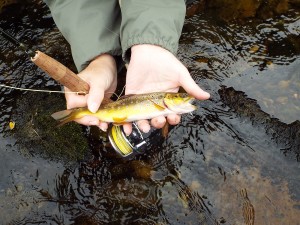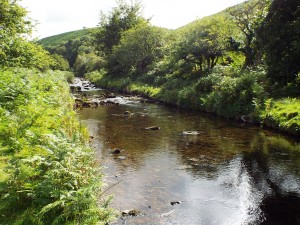Wilderness Fly Fishing Weekend 16th – 18th May 2014
A weekend of camping and fly fishing on some of Exmoor’s wild rivers surrounded by stunning scenery.
Join myself and rivers expert Lewis Hendrie, a member the England European Rivers fly fishing team and local guide, for a weekend of guided fly fishing on some truly wild rivers and streams.
This course is suitable for a river novice or a more experienced fly angler wishing to learn some more skills and techniques. There will be an element of walking over the weekend (around 30 minutes to one of the beats) so you will need to be reasonably fit, although the walking is usually overshadowed by the stunning surrounding scenery!
The weekend will start by meeting up at the camp site around 3.00pm on the Friday, set up camp and then a meal around the camp fire with plenty of fishy banter!
After breakfast on the second day we depart for the water where you will spend the day catching some truly beautiful wild brown trout whilst learning some new river skills. At the end of day it’s back to camp for some food and an evening around the camp fire.
Breakfast on Sunday will be followed by packing up camp before making our way to a different river and fishing until 3.00 pm. We will all meet up after the fishing for a quick debrief and to say our goodbyes.
Cost for the weekend will be £225.00 per person.
All camping fees, fishing permits, food and guiding fees are included in the cost. All you need to do is to bring a tent, sleeping bag and a chair to sit around the fire on! Any tackle you need can be supplied along with waders although please feel free to bring your own if you have any.
To reserve a place a deposit of £75 is required, or you may pay the full amount if you wish at the time of booking. Any balance must be paid by 14 days before the course date.
As this is a river course, it will be subject to cancellation due to weather conditions, so please bear this in mind, although a full refund will be given in this event.





